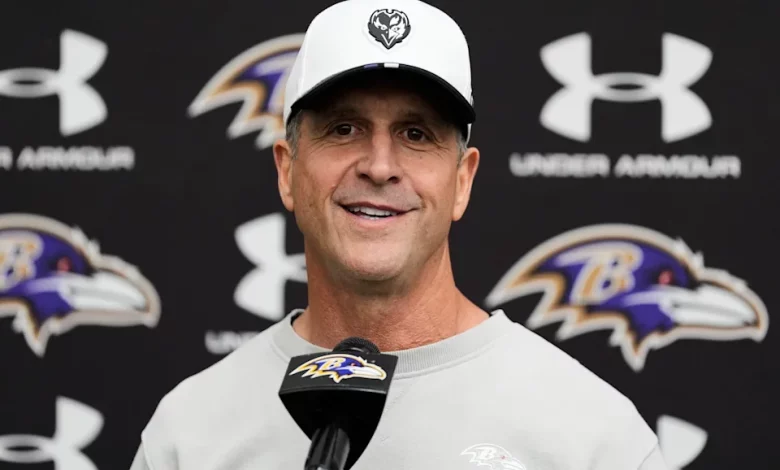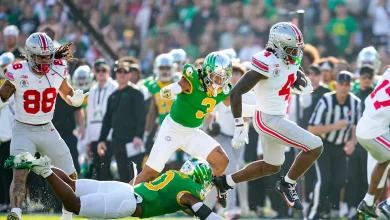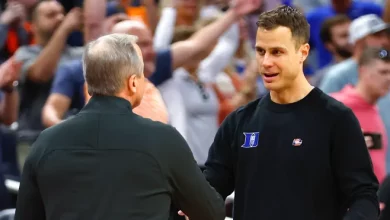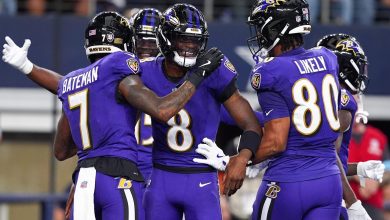Harbaugh says cutting ties with Justin Tucker was a ‘complex’ decision for the Ravens

Harbaugh says cutting ties with Justin Tucker was a ‘complex’ decision for the Ravens
The decision to release a franchise icon is rarely straightforward, and when it involves a player as legendary as Justin Tucker—the NFL’s most accurate kicker and a key figure in the Baltimore Ravens’ recent history—the process becomes even more layered and nuanced. Head Coach John Harbaugh labeled the Ravens’ choice to part ways with Tucker as a “complex” decision, highlighting the multifaceted considerations that go into such a pivotal roster move. This comprehensive analysis explores the myriad factors that contributed to this difficult choice, the emotional and strategic elements involved, and what it signifies for the Ravens’ future.
—
### The Significance of Justin Tucker in Ravens History
Justin Tucker has been more than just a kicker for the Ravens; he is a symbol of consistency, clutch performance, and leadership. Drafted in 2012, Tucker quickly established himself as one of the league’s premier specialists, eventually setting records for accuracy and game-winning kicks. Over his decade-long tenure, he became a franchise cornerstone, earning the trust of coaches, teammates, and fans alike.
– **Career Achievements:**
– NFL’s all-time most accurate field goal kicker (over 90%)
– Multiple Pro Bowl and All-Pro selections
– Key contributions in playoff games, including game-winners and clutch field goals
– Breakout moments that elevated the Ravens’ chances of playoff success and Super Bowl contention
His consistency and mental toughness helped define the Ravens’ identity for years, making the decision to release him an emotionally charged and strategically complex process.
—
### Context of the Decision
**A. The NFL’s Salary Cap and Roster Management**
One of the primary drivers behind roster decisions in the NFL is the league’s salary cap—a financial ceiling that limits how much teams can spend annually on player salaries. Managing this cap requires balancing veteran leadership, positional depth, and future flexibility.
– **Cap Implications of Tucker’s Contract:**
Tucker’s salary, while historically significant for a kicker, eventually became a substantial cap hit for the Ravens, especially as veteran contracts tend to rise over time. Teams often reevaluate whether the cap space invested in aging players can be better allocated elsewhere.
– **Cap Savings and Dead Money:**
Releasing Tucker meant the Ravens could free up salary cap space, but they also had to consider dead money—the amount of salary cap they’d lose due to guaranteed money already paid or guaranteed in his contract. The decision involved calculating whether the cap savings justified the loss of a reliable performer.
**B. Performance and Age Considerations**
– **Physical and Mental Decline:**
While Tucker remained highly accurate, some metrics indicated a slight decline in long-distance accuracy, and his leg strength might have diminished marginally with age. The team needed to evaluate whether his performance would sustain at the same elite level moving forward.
– **Age Factor:**
At age 33 or 34, Tucker was approaching the age where teams often start contemplating succession plans for specialists, mindful of injury risks and the natural decline in athleticism.
**C. Strategic and Tactical Shifts**
– **Evolving NFL Strategies:**
The league has seen a shift toward more aggressive fourth-down attempts and analytics-driven decision-making, sometimes reducing reliance on long field goals. The Ravens, under Harbaugh’s leadership, have adapted their approach, which could influence the value of a veteran kicker.
– **Injury Risks and Durability:**
As players age, injury risk increases. Although Tucker had maintained durability, the team considered whether parting ways would mitigate future risk or ensure continued high performance.
**D. The Search for the Next Generations of Specialists**
– **Development of Young Talent or Acquisition of New Kicker:**
The Ravens would need to identify a replacement—either through drafting, free agency, or developing a younger player—who might provide comparable accuracy at a lower cost or with potential for growth.
– **Transition Planning:**
The team had to manage the transition smoothly to avoid disrupting team chemistry, special teams effectiveness, or fan sentiment.
—
### The ‘Complex’ Decision-Making Process
Head coach John Harbaugh described the process as “multi-layered” and “complex,” and that description is apt when dissecting the intricacies involved.
**1. Emotional and Cultural Significance**
Justin Tucker’s status as a franchise icon meant that any decision to release him carried emotional weight. Respecting his contributions, legacy, and the morale of the team were critical factors.
– **Player Respect and Leadership:**
Tucker’s leadership in the locker room and his role as a steadying presence meant that releasing him was not just a roster move—it was a cultural shift.
– **Fan and Community Impact:**
Fans regard Tucker with admiration. The team had to consider public perception and the message sent to supporters about valuing loyalty and excellence.
**2. Contractual and Financial Nuances**
– **Negotiations and Buyouts:**
The process involved discussions about contract restructuring, potential buyouts, and timing to minimize negative cap implications.
– **Dead Money and Cap Planning:**
The team analyzed the dead money impact and strategized the timing of the release to optimize cap space without severely hampering future planning.
**3. Performance Data and Analytics**
– **Quantitative Analysis:**
Advanced metrics and game film showed Tucker’s strengths and weaknesses, helping the coaching staff determine whether continued investment was justified.
– **Long-Range Accuracy and Clutch Performance:**
While Tucker remained reliable, even small declines in performance metrics prompted evaluation, especially given the team’s evolving offensive strategies.
**4. Replacement Strategy and Future Planning**
– **Identifying a Successor:**
The Ravens considered drafting a young kicker, signing a free agent, or developing a current player. The goal was to ensure continuity and maintain special teams excellence.
– **Impact on Special Teams Unit:**
Special teams coordinators had to integrate the new kicker smoothly, preserving the stability that Tucker had provided.
**5. Timing and Public Relations**
– **Handling Public Announcement:**
The team aimed to communicate the move transparently, honoring Tucker’s legacy while emphasizing the strategic nature of the decision.
– **Managing Media and Fan Reactions:**
Recognizing the emotional significance, the team prepared messaging to respect Tucker’s contributions and articulate the rationale clearly.
**6. Long-Term Strategic Considerations**
– **Cap Flexibility and Roster Flexibility:**
The release allowed the Ravens to allocate cap space to other priorities, such as improving the offensive line or defensive units.
– **Team Evolution:**
The move reflected a broader strategy of balancing veteran leadership with youth development and future planning.
—
### The Impact and Repercussions
**A. Immediate Fan and Player Reaction**
The news of Tucker’s release generated a wave of reactions—some fans expressed disappointment and nostalgia, while others understood the strategic necessity. Within the locker room, veteran players and teammates voiced respect for Tucker’s professionalism and contributions.
**B. Future of the Ravens’ Special Teams**
The move signaled a new chapter in the Ravens’ special teams strategy. The team would need to identify a reliable replacement while maintaining the high standards Tucker set.
**C. Lessons in NFL Management**
The decision exemplifies how NFL teams must weigh emotional bonds against strategic imperatives, demonstrating that even the most beloved players are subject to roster realities.
**D. Long-Term View**
If the replacement performs at a high level, the move could be viewed as a smart evolution; if not, it could be scrutinized in hindsight. Harbaugh’s recognition of the process as “complex” underscores the difficulty of making such pivotal decisions.
—
### Broader Implications for the Franchise and NFL
The Ravens’ handling of Tucker’s departure offers insights into the franchise’s philosophy: valuing long-term strategic planning while respecting individual contributions. It highlights the importance of adaptability, data-driven decision-making, and emotional intelligence in roster management.
Other NFL teams observe such moves as lessons in balancing legacy with future needs, and Harbaugh’s candor about the process emphasizes transparency and humility in leadership.
John Harbaugh’s characterization of releasing Justin Tucker as a “complex” decision encapsulates the multifaceted reality of NFL roster management. It involved balancing respect for a franchise legend with the pragmatic needs of the team’s salary cap, performance considerations, future planning, and emotional bonds. The move reflects the tough but necessary choices that leadership must make to ensure sustained success, even when it involves parting ways with a beloved icon. As the Ravens transition into this new chapter, the decision underscores their commitment to strategic growth while honoring their storied past—and Harbaugh’s acknowledgment reminds us that even the most straightforward-sounding moves are layered with nuance, emotion, and foresight.









